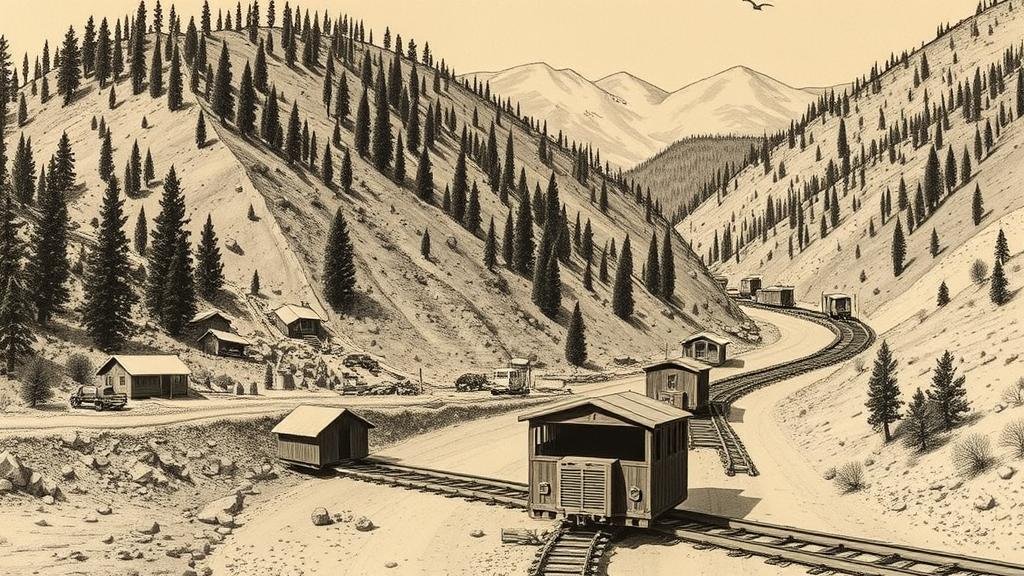How California’s Big Bear Valley Became a Center for Gold Mining
How California’s Big Bear Valley Became a Center for Gold Mining
California is synonymous with the Gold Rush, a historical event that spurred massive migrations and altered the landscape of economic opportunities in the United States. Among the many locations that emerged as significant sites during this period was Big Bear Valley. Nestled in the San Bernardino Mountains, this region transitioned from a serene getaway to a bustling hub of gold mining. This article delves into the factors that contributed to Big Bear Valleys prominence in the gold mining sector.
The Discovery of Gold
The genesis of Big Bear Valleys gold mining era can be traced back to the early 19th century. Reports of gold discoveries in California spread like wildfire, igniting interest among prospectors. In 1850, a miner named William F. Holcomb was pivotal in this discovery when he found gold in what would later be known as Holcomb Valley, adjacent to Big Bear Valley. His findings not only attracted attention but also laid the groundwork for future mining endeavors.
Geological Factors
The geological composition of Big Bear Valley played a critical role in its suitability for gold mining. The valley is characterized by a rich array of mineral deposits, including quartz and various metals. presence of lode gold, which is embedded in solid rock, contrasted sharply with placer gold, often found in riverbeds and stream beds. This differentiating factor allowed for various mining techniques to be utilized, catering to different types of prospectors.
The Gold Rush Era
The Gold Rush reached its zenith in the mid-1850s, leading to a surge of prospectors accessing Big Bear Valley. The influx of miners created a vibrant community, transforming the relatively underdeveloped area into a settlement comprising various establishments:
- General stores to supply mining goods
- Saloons for socializing and relaxation
- A network of roads facilitating transport and logistics
This rapid development laid the foundational infrastructure for sustained mining operations. By mid-decade, thousands of prospectors had made their way to the valley, creating a micro-economy driven by gold extraction.
Mining Techniques and Innovations
Mining operations in Big Bear Valley benefited from the implementation of various techniques. Initially, miners relied on simple methods such as panning and sluicing, which were accessible but labor-intensive.
As the mining community evolved, so did their tools and approaches:
- Hydraulic Mining: This method involved using high-pressure water jets to displace soil and extract gold. It significantly increased gold yield, enabling miners to work more efficiently.
- Hard Rock Mining: As miners targeted deeper veins, this method entailed digging tunnels through rock, extracting ore for milling.
Each technique corresponded with technological advancements, such as the introduction of steam power, which facilitated more extensive and deeper mining operations.
The Decline of Gold Mining Activity
Long-term Effects on the Region
The repercussions of the gold mining boom sustained Big Bear Valley even after the initial rush subsided. The infrastructure developed during the mining era laid the groundwork for future tourism and recreational activities. Today, Big Bear Valley is renowned for its natural beauty, attracting visitors for renowned activities such as skiing, hiking, and fishing, yet remnants of its mining past can still be witnessed in preserved sites and historical museums.
Conclusion
Big Bear Valleys transformation into a center for gold mining is a compelling narrative of opportunity and ambition. From the initial discovery of gold to the evolution of mining techniques, the valleys history is a testament to the impact of the Gold Rush on the socio-economic fabric of California. Understanding this journey offers valuable insights into how natural resources can shape communities. As we reflect on this legacy, it is essential to preserve and educate future generations on the importance of sustainable resource management.
For those interested in the intersection of history and ecology, visiting Big Bear Valley provides an opportunity to appreciate both the glories and the challenges of its past, serving as a reminder of the balance between development and environmental stewardship.



